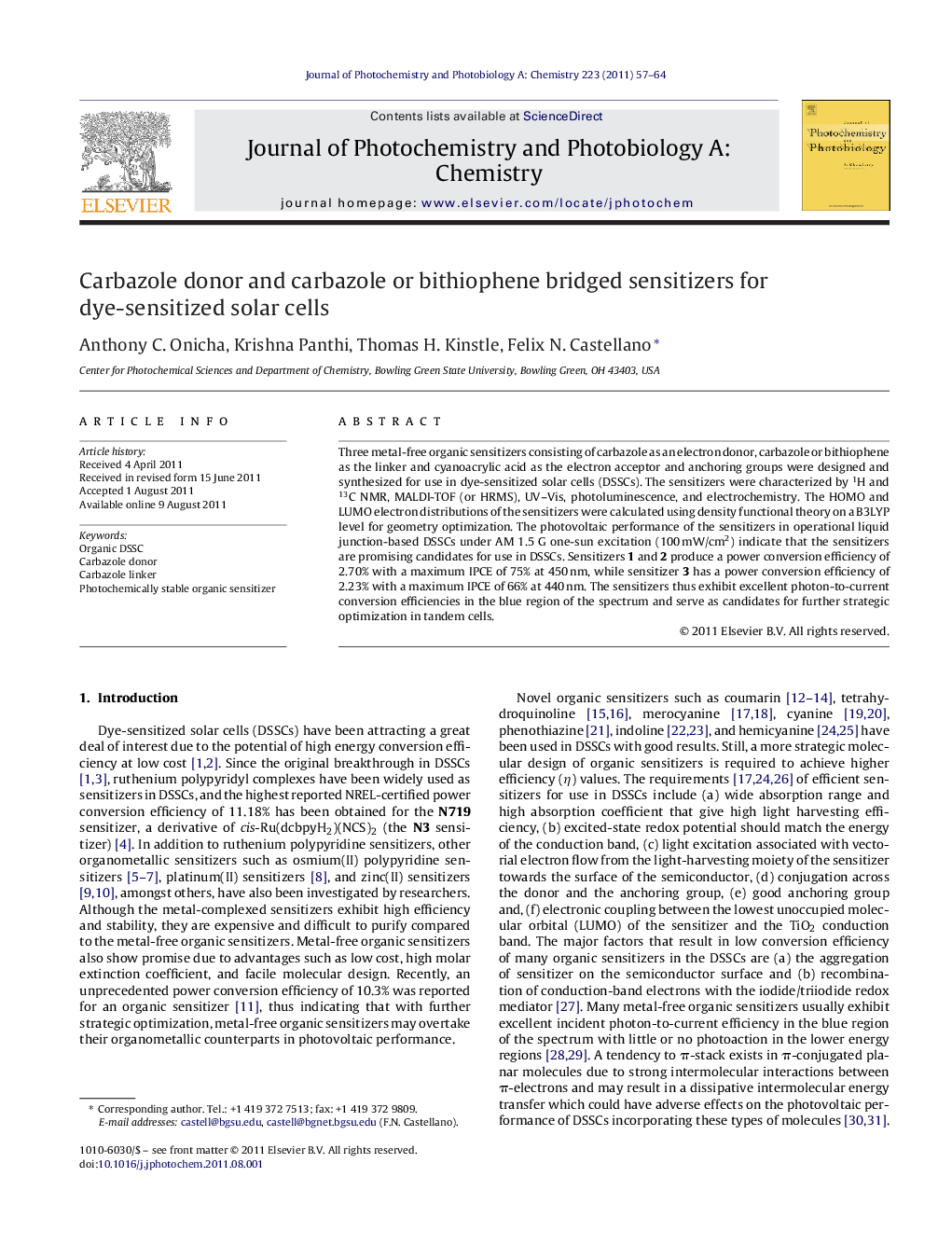| Article ID | Journal | Published Year | Pages | File Type |
|---|---|---|---|---|
| 27419 | Journal of Photochemistry and Photobiology A: Chemistry | 2011 | 8 Pages |
Three metal-free organic sensitizers consisting of carbazole as an electron donor, carbazole or bithiophene as the linker and cyanoacrylic acid as the electron acceptor and anchoring groups were designed and synthesized for use in dye-sensitized solar cells (DSSCs). The sensitizers were characterized by 1H and 13C NMR, MALDI-TOF (or HRMS), UV–Vis, photoluminescence, and electrochemistry. The HOMO and LUMO electron distributions of the sensitizers were calculated using density functional theory on a B3LYP level for geometry optimization. The photovoltaic performance of the sensitizers in operational liquid junction-based DSSCs under AM 1.5 G one-sun excitation (100 mW/cm2) indicate that the sensitizers are promising candidates for use in DSSCs. Sensitizers 1 and 2 produce a power conversion efficiency of 2.70% with a maximum IPCE of 75% at 450 nm, while sensitizer 3 has a power conversion efficiency of 2.23% with a maximum IPCE of 66% at 440 nm. The sensitizers thus exhibit excellent photon-to-current conversion efficiencies in the blue region of the spectrum and serve as candidates for further strategic optimization in tandem cells.
► New metal-free dyes utilizing carbazole as an electron donor, carbazole or bithiophene as the linker and cyanoacrylic acid as the electron acceptor were synthesized and structurally characterized. ► These dyes were incorporated into functional DSSCs producing power conversion efficiencies approaching 3% under AM 1.5 G excitation conditions. ► The new molecules efficiently harvest the blue portion of the solar spectrum and are proposed as viable candidates for tandem devices. ► Continuous 1-h photolysis of the operational devices illustrated no significant attenuation in performance suggesting stability to long-term light soaking.
